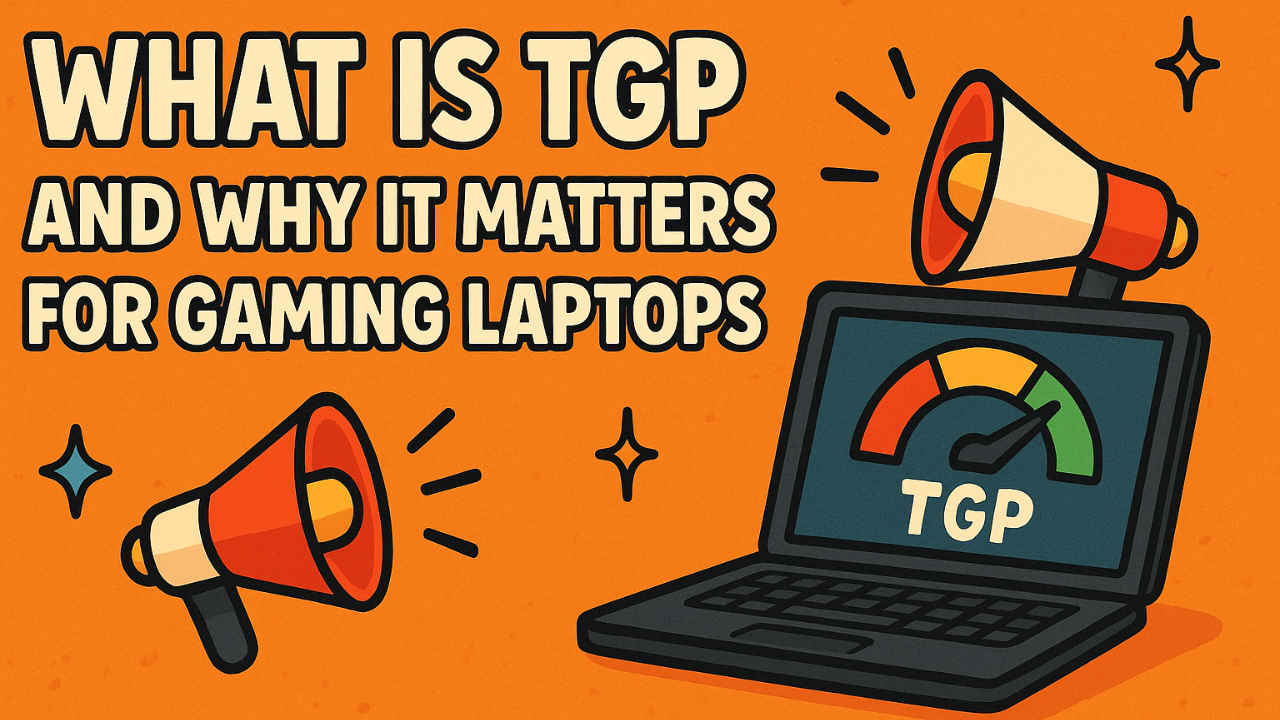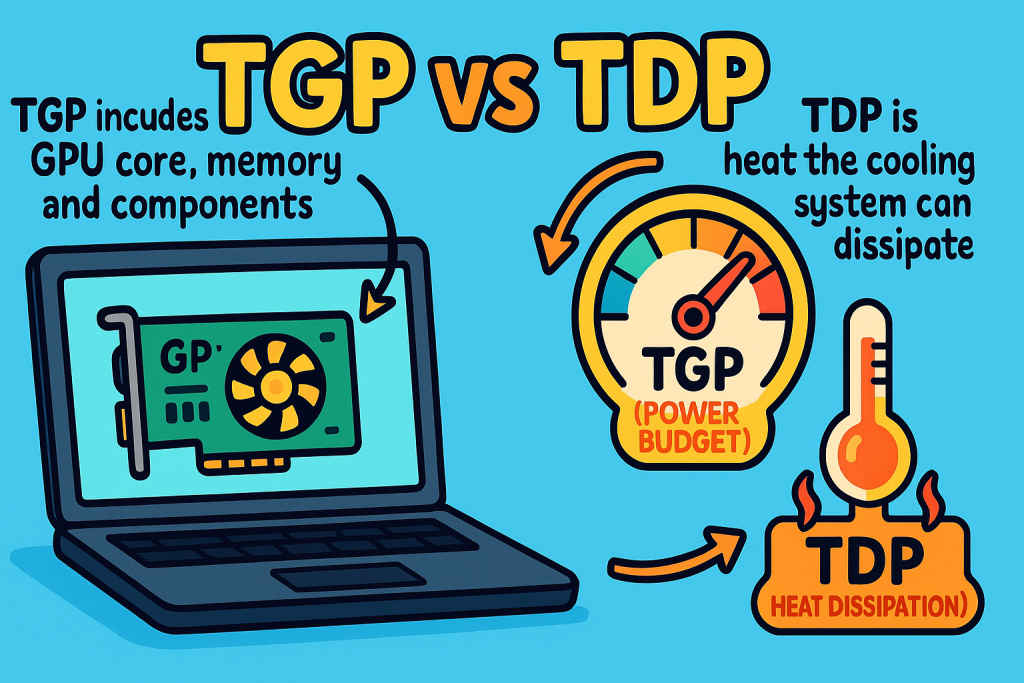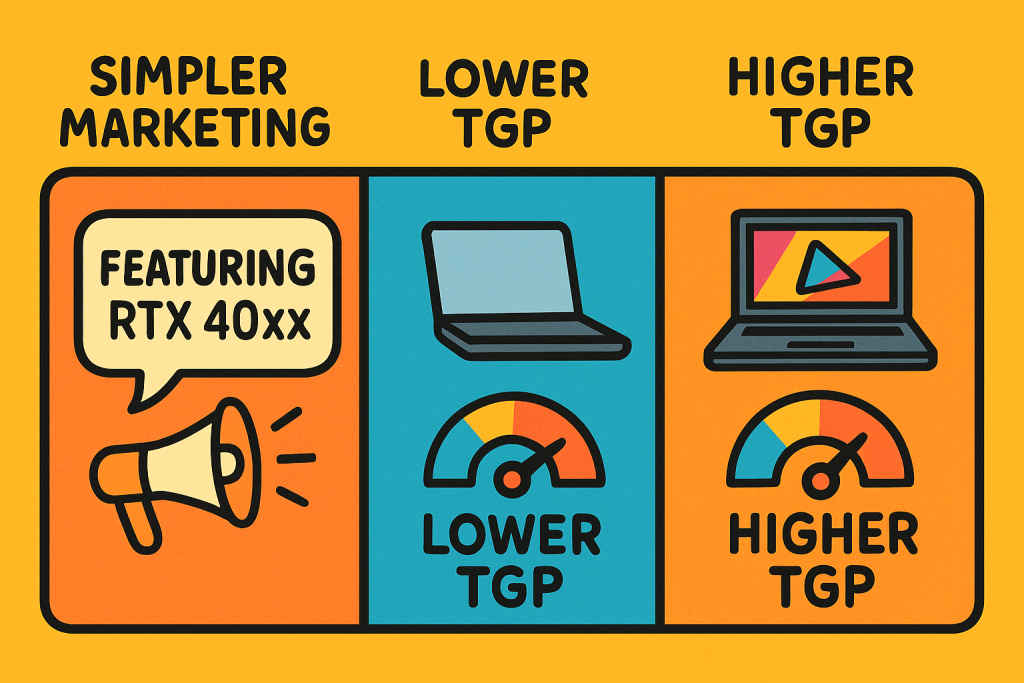What is TGP and why it matters for gaming laptops

Have you ever wondered why two gaming laptops with identical GPU models perform so differently? Perhaps you’ve noticed one RTX 4060 laptop consistently outperforming another, despite having the same graphics card on paper. The secret behind this performance gap often lies in a specification that many manufacturers conveniently tuck away in the fine print: Total Graphics Power, or TGP. Understanding this critical yet often overlooked specification could save you from spending more money on a higher-tier GPU that might actually perform worse than a properly configured lower-tier option.
 Survey
SurveyThe basics of TGP
Total Graphics Power (TGP) represents the maximum power allotted to a laptop’s graphics card, measured in watts. Unlike desktop GPUs, which operate within standardised power parameters, laptop graphics cards can be configured to draw vastly different amounts of power depending on the manufacturer’s design choices. TGP encompasses not just the GPU core itself, but the entire graphics solution, including memory and associated components.

TGP is often confused with TDP (Thermal Design Power), but there’s a crucial difference. While TDP indicates the maximum heat a component generates that its cooling system can dissipate under normal conditions, TGP specifically refers to the power supplied to the graphics card. Think of TGP as the power budget your laptop allocates to its graphics capabilities – the higher this budget, the more performance potential your GPU has to work with.
Same GPU, different performance
The most eye-opening aspect of TGP is how dramatically it affects performance between identical GPU models. For instance, an RTX 3060 laptop GPU can be configured anywhere from 60W to 115W depending on the manufacturer’s implementation. This power variance directly impacts the GPU’s boost clock speeds, which determine real-world performance.
Take the Alienware m15 R5 Ryzen Edition with an RTX 3060 running at 125W TGP – it achieves 76.9 FPS in The Witcher 3 at Ultra settings. The MSI GF65 Thin, featuring the same RTX 3060 but at only 85W TGP, manages just 68.7 FPS in the same game. That’s nearly a 12% performance difference despite both laptops having the “same” graphics card.
Even more shockingly, in some cases, a lower-tier GPU with higher TGP can outperform a higher-tier GPU with restricted power. The Predator Neo 16 with an RTX 4050 at 115W TGP delivers better performance than the Alienware X14 R2’s RTX 4060 at 85W TGP. This counter-intuitive scenario means consumers could potentially be paying premium prices for underperforming hardware if they don’t consider TGP.
Why laptop makers don’t highlight TGP clearly

Despite its significant impact on performance, many laptop manufacturers are conspicuously quiet about TGP specifications. Whilst Nvidia technically requires vendors to list power and clock speeds for RTX 30-series laptops, many prominent manufacturers like Asus, Razer, and Lenovo often don’t prominently display this information.
There are several reasons for this reluctance. First, highlighting different power configurations for the same GPU model complicates marketing messages. It’s simpler to advertise “featuring RTX 4070” than explaining why their implementation might perform differently from competitors. Second, lower TGP versions allow manufacturers to integrate powerful GPUs into thinner, lighter laptops that couldn’t accommodate the cooling systems needed for higher power versions.
Additionally, some manufacturers may prefer consumers focus on the GPU model rather than its power configuration, especially if their implementation runs at lower TGP than competitors. After all, an RTX 4080 with low TGP still sounds more impressive in marketing materials than an RTX 4070 with high TGP, even if the latter might perform better in reality.
Real-world scenarios and benchmarks
The impact of TGP differences becomes starkly apparent when examining real-world benchmarks. Looking at actual gaming performance across different laptops with the same GPU reveals just how significant these power differences can be:
For an RTX 3060 GPU, higher TGP configurations like the Alienware m15 R5 (125W) achieve a 1,680 MHz boost clock, resulting in 101.6 FPS in Far Cry 5 at Ultra settings. Meanwhile, an Acer Nitro 5 with the same GPU but at 80W TGP reaches only 1,425 MHz boost clock and delivers 96 FPS in the same game. That’s a 6% performance difference that directly correlates with the TGP disparity.
The impact becomes even more pronounced in demanding titles like Cyberpunk 2077, where every ounce of GPU performance matters. The variance can mean the difference between a smooth gaming experience and one plagued by stutters and frame drops, especially when ray tracing features are enabled.
How to Check or Estimate TGP
Given how crucial TGP is to performance, knowing how to identify it becomes essential for informed purchases. Unfortunately, as mentioned earlier, not all manufacturers prominently display this information. Here are several methods to determine the TGP of your current or prospective laptop:
The steps to check the TGP of your GPU depend on the manufacturer. If you have an NVIDIA GPU, then you can go to the NVIDIA Control Panel and under the System Information, you will find ‘Maximum Graphics Power’:
The another way which is little lengthy but still recommended for enthusiasts is to stress test your GPU and monitor the maximum power being used by GPU via HWiNFO. We recommend 3DMark for GPU testing and the idea is to let the test finish while run the HWiNFO in the background and it will capture the TGP of your machine.
Should You Always Choose Higher TGP?
While higher TGP generally means better performance, it’s not always the optimal choice for every user. Consider these trade-offs:
Thermal Considerations: Higher TGP means more heat generation. A gaming laptop with 140W GPU power needs robust cooling systems to prevent thermal throttling, which often results in thicker, heavier designs and potentially louder fans. If portability matters to you, a moderate TGP might be preferable.
Battery Life: Graphics cards with higher TGP consume significantly more power, drastically reducing battery life during gaming sessions. If you frequently game unplugged, a lower TGP configuration might be more practical, though for maximum gaming performance, you’ll want to be plugged in regardless.
Form Factor: Thin and light gaming laptops simply cannot accommodate the cooling systems required for maximum TGP implementations. If you prioritise portability, you’ll need to accept the performance compromises that come with lower power configurations.
Usage Patterns: Consider what games you play and at what settings. If you mainly enjoy esports titles that aren’t graphically demanding, a lower TGP implementation might provide perfectly adequate performance while offering better battery life and thermals.
As a general guideline, for 1080p gaming, most mid-range GPUs with moderate TGP (around 80-100W) should deliver satisfactory performance. For 1440p gaming or demanding titles with ray tracing, higher TGP implementations (100W+) will provide noticeably better experiences.
Conclusion: What to Look for Before Buying
When shopping for a gaming laptop, looking beyond the GPU model name to its power configuration can save you from potential disappointment. Here’s what to prioritise:
Always check the specific TGP value of any gaming laptop you’re considering. Compare it against the maximum possible TGP for that GPU model to understand where it falls in the performance spectrum. Remember that a lower-tier GPU with higher TGP might outperform a higher-tier GPU with restricted power.
Consider your usage needs holistically-balance performance requirements against battery life, portability, and thermal considerations. Don’t forget that other specifications like CPU, RAM, and cooling design also impact overall gaming performance.
Read professional reviews that include detailed benchmarks of the specific model you’re considering, as these will reflect the real-world performance you can expect from that particular TGP configuration.
Finally, don’t be swayed solely by marketing that emphasises having the latest high-end GPU model. A well-balanced system with appropriate TGP for your needs will provide a better overall experience than a thermally constrained, power-limited implementation of a theoretically more powerful GPU.
This article is part of our comprehensive “Gaming Laptops Series” designed to help you navigate the complex world of mobile gaming hardware with confidence and make informed purchasing decisions.
Sagar Sharma
A software engineer who happens to love testing computers and sometimes they crash. While reviving his crashed system, you can find him reading literature, manga, or watering plants. View Full Profile